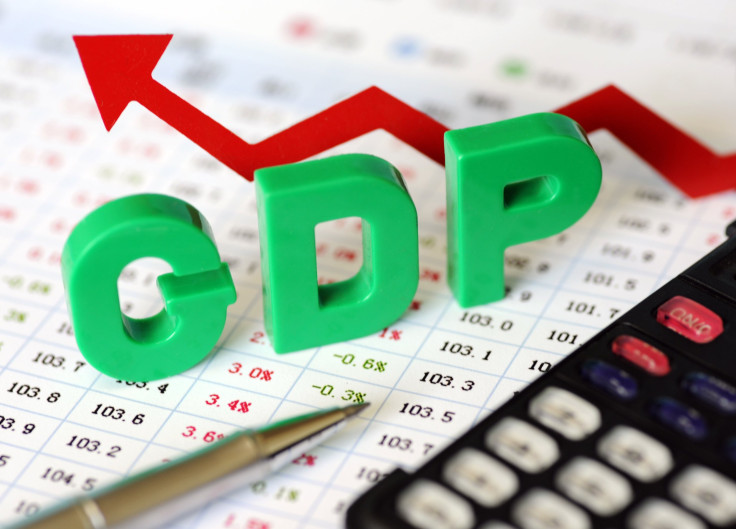Beyond GDP: Measuring 'Societal Progress' With Birth Weight, Hours Slept, Eyelgasses, And More

Babies’ birth weight, the amount of hours a person sleeps each night; how many people wear eyeglasses; presence of chirping birds; use of washing machines; and how many teenage girls attend school are all factors that measure a nation’s wealth beyond Gross Domestic Product, experts say. A two-day workshop and symposium supported by the United Nations will be held May 19, in Kuala Lumpur, Malaysia to explore more accurate quantifiable signals of a country’s wellbeing, Forbes reported. A brand new Inclusive Wealth Report (IWR) with focus on human capital will be released in Japan in November.
"Because the notion of 'capital' extends beyond reproducible assets to include human capital, natural capital, and knowledge and institutions (the enabling assets), we need to stretch the notion of 'investment,'" said Sir Partha Dasgupta a Cambridge University economist, and one of the 500 symposium attendees, in a press release. “That suggests investment amounts to deferred consumption. But the matter is subtler. Providing additional food to undernourished people by means of, say, food guarantee schemes not only increases their current well-being (food is enjoyable), it enables them also to be more productive in the future (they will have greater strength and stamina) and to live longer.”
Gross Domestic Product (GDP) is a statistical measurement that was designed in 1937 to singularly define a country’s overall welfare. This Nobel prize-wining metric would, in theory, capture all economic production by individuals, companies, and the government, which would predictably rise in prosperous times and fall in bad.
It is used to indicate if things are getting better or worse for a country by tallying a country’s entire economic output, such as manufacturers’ shipments, farmers’ harvests, retail sales, construction spending, and many other factors of financial exchange. By 1990, the United Nations launched the Human Development Index, which improves upon the abilities of GDP in an effort to move beyond its limitations by taking education, gender equality, and health into account.
It took decades for countries to collect the necessary information for economists and statisticians to even create methods for comparing GDP over time across nations. College classrooms and foreign affairs policy offices across the nation still learn and use GDP calculations to measure the overwhelming stream of monetary exchange in one’s country.
Now, countries are ready to move beyond the constraints of the GDP, which will be the focus of the symposium attended by world leaders. Hosts of the event will include the United Nations University's International Human Dimensions Programme on Global Environmental Change (IHDP), the Malaysian Industry Government Group for High Technology (MIGHT), in partnership with the Japanese Ministry of Environment and the Sime Darby Foundation.
“World leaders are acknowledging GDP’s limitations, as well as the need for broader measures to evaluate societal progress,” said Anantha Duraiappah, the co-host of the symposium and director of UN University’s program on global environmental change.
The IHDP reports in the new edition of its magazine that policymakers focus too much attention on complex factors to measure societal success, which causes them to miss “some of the most meaningful and simple signs there are: human dimensions.”
Candidates for inclusion in the new human dimension measurement toolbox include, birth weight, hours slept, city birds, washing machines, and teenage school girls.
Birth Weight: Every additional ounce a baby weighs when it is first born can add significant quality over the span of a person’s life. Experts have determined that babies weighing less than 3 lbs., 10 ounces at birth will more likely have negative long-term health effects.
Hours Slept: More sleep is also an indicator of a healthier and more productive population. The more hours of sleep an individual has, the more a person has been shown to have better interpersonal relationships, impulse controls, sense of independence, optimism, emotional intelligence, and empathy.
Eyeglasses: Glasses provide children with the potential to learn and be more productive in their adult life. They raise an individual’s per capita earning potential by 20 percent. With over 700 million people without vision correction, economic losses equal about $202 billion.
Birds: The presence of bird species is an indicator of environmental health because they are at the top of the food chain, which makes them susceptible to chemicals and other hazards. More birds is a simple indicator of the health of the environment.
Washing Machines: Two billion out of the seven billion people in this world have access to a washing machine, which requires water and power to function. Experts believe this is a sign of a stronger infrastructure and allows individuals to shift their energies from washing to better pursuits.
Teenage Schoolgirls: Less than one in five girls in sub-Saharan Africa have the ability to attend a secondary school. With every extra year of education, a girl’s future wages will rise by 15 to 25 percent. By counting schoolgirls, experts will be able to predict social and economic stability.
"GDP and other traditional yardsticks will continue to inform our understanding of economic performance, but the world's perspective on progress needs to be enlarged, balanced, and integrated with social and environmental indicators. Only in this way can we respond to the unprecedented opportunities and challenges facing us in the 21st Century," said Zakri Abdul Hamid, a member of the UN Secretary-General's Scientific Advisory Board, and Science Adviser to the Prime Minister of Malaysia, in the release.



























